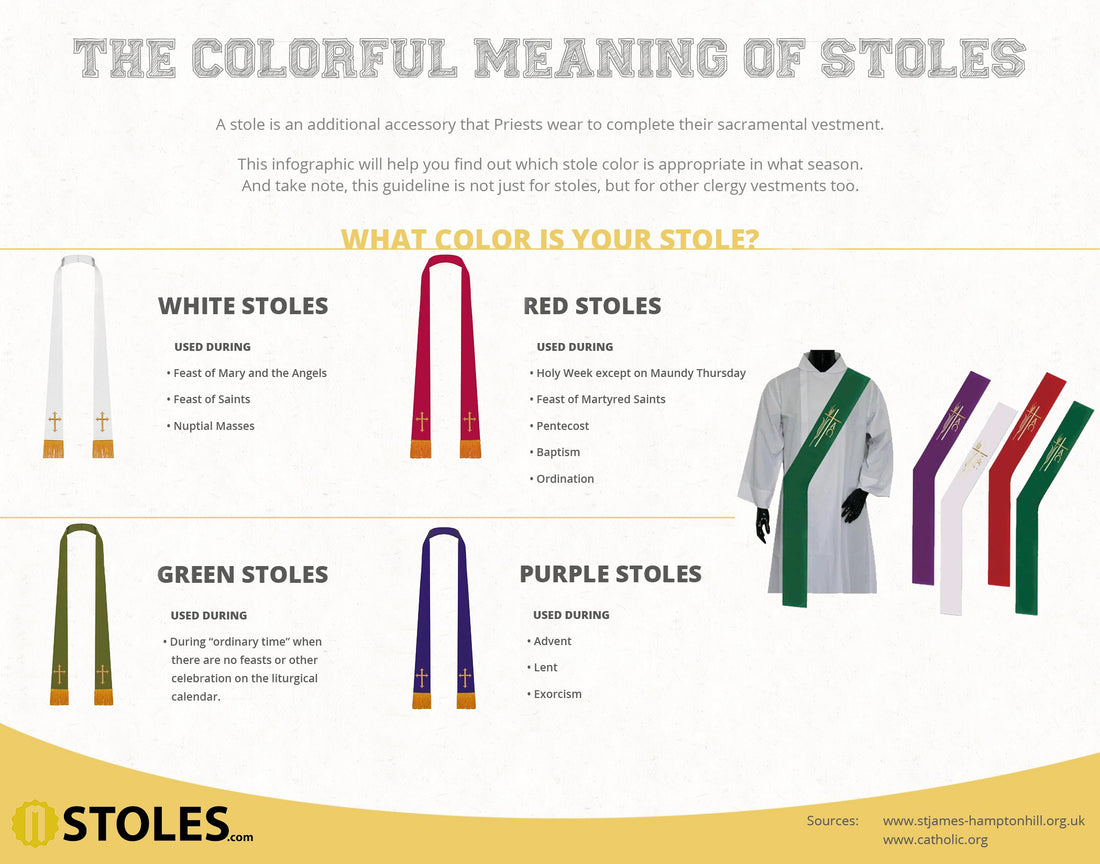When it comes to grieving in ancient Rome, the emperor will get dressed in a royal violet gown, and the priests of Mars will don in crimson clergy robes to commemorate the bloodthirsty god of battle, and households in grief shrouded them with a black cloth.
However, whenever Christian deacons, bishops, and priests appear before the altar, they typically wear white garments to distinguish themselves from others. The priests' selection of white clergy stoles, like the king's choice of violet and the bereaved choice of black, wasn't really arbitrary. Philosophers tended to dress in white. Senators felt the same way. Wearing white clergy stoles made it clear that white signifies their mission as lecturers of the devout as well as the leaders of the Church through the use of their white garments.
In many ways, the evolution of the pastoral colors that we witness at Mass every day seems to be tied to the growth of the Christian calendar. During the first three centuries, the Church observed only three religious holidays: Sunday, Easter, and Pentecost. However, on the festival days of localized martyrs, local churches would hold a Mass at the saint's grave.
Following the publication of Emperor Constantine's Edict of Milan in 315, which allowed the Congregation to rise from the tombs, every area of liturgical life began to flourish. Christmas and Easter were incorporated into the timetable in the 4th century. By the 5th century, Christians in Central Asia started to commemorate Our Lady's Assumption. Church groups began to wear their priesthood in colored clergy stoles and robes to highlight the uniqueness of religious holidays and festive seasons.
Originally, liturgical colors ranged over the entire spectrum. However, by 1200, the predominant liturgical hues in the West became red, white, green, violet, and black or purple. These five shades are now the most popular vestment hues in the Roman Catholic Church.
COLOR INTERPRETATION
White is a color that denotes joy, purity, innocence, and splendor. So, white clergy stoles are donned during the periods of Christmas and Easter as well as on all festivals of Our Lord apart from his Suffering, on celebrations of the Blessed Virgin, on celebrations of the angels, and on festivals of saints that were not martyrs. White garments are also worn during in the periods of Lent and Advent.
Red Clergy Stoles are linked to blood and depicts the consuming compassion of the Holy Ghost. On the other hand, Pentecost and the liturgical traditions of the martyrs are among the occasions on which red clothing is worn. Good Friday, Palm Sunday, and the other feast days honoring Our Lord's Sacrifice are among them.
Green Clergy Stoles seem to be the symbol of renewal and hope, and it represents the prospect of everlasting life in particular. Even during the liturgical period currently known as Ordinary Time, the color green is donned.
Purple clergy stoles are associated with grief and repentance. It is the shade of Advent and Lent and also the blanket worn by the priest during hearing confessions.
Mourning is symbolized by the color black. Contrary to popular opinion, black or purple uniforms may be dressed at funeral Masses.
Rose, a pleasant color, is only worn twice a year: on the Third Sunday of Advent, the Gaudete Sunday, and on Laetare Sunday, which is the Fourth Sunday of Lent. Rose garments alleviate some of the seasonal sadness by remembering that Christmas and Easter are just around the corner.
Gold-colored garments may be worn at essential Masses, including Midnight Mass. Silver-colored clothing is also acceptable on solemn religious holidays. However, seeing a priest clad in silver is unusual in the U.S.
While the origins of religious and clergy stoles are from a long time ago, today we do know the best way to wear and use your stole, at Stoles.com we offer a wide range of religious stoles in different styles and colors to suit any occasion or match of your clergy robes or vestments. We would love to hear from you at 1-855-241-7900. God Bless.


